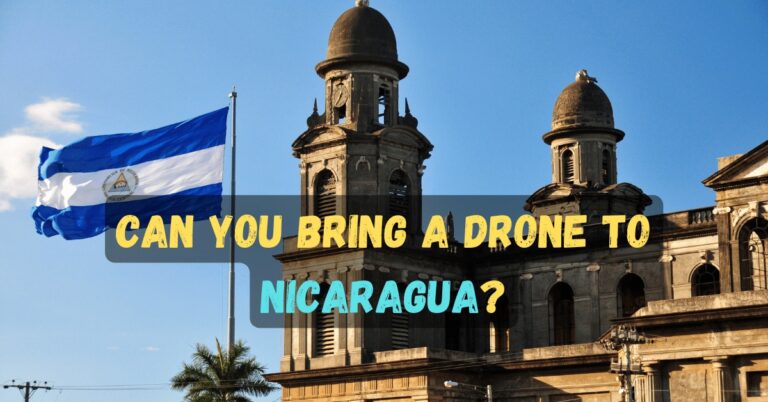Can You Fly a Drone in Iceland? (Drone Laws in Iceland 2024)

When it comes to breathtaking landscapes and stunning natural wonders, Iceland is undoubtedly a dream destination for many travelers.
From majestic waterfalls to vast lava fields, the country’s unique geography offers endless opportunities for exploration and adventure. But what about capturing these awe-inspiring views from above? Can you fly a drone in Iceland?
Are drones allowed in Iceland?/Can you fly a drone in Iceland?
That’s a question that many aerial enthusiasts ask themselves before packing their bags and heading to the land of fire and ice. The answer is yes, but with a few caveats. You see, Iceland is not a fan of drones buzzing around its majestic scenery and disturbing its wildlife.
That’s why there are some rules and regulations that you need to follow if you want to fly your drone in Iceland without getting into trouble. Here are some of the most important ones:

If you follow these rules, you should be able to enjoy flying your drone in Iceland and capture some stunning photos and videos of its natural wonders.
However, be aware that the weather in Iceland can be unpredictable and change quickly, so always check the forecast before taking off. Also, be respectful of the environment and the locals, and don’t fly your drone where it might cause annoyance or damage.
So, are drones allowed in Iceland? Yes, but be careful!
Who Controls drone laws in Iceland?
If you want to fly a drone in Iceland, you better know the rules. The Icelandic Transport Authority (ITA) is the one who controls drone laws in this Nordic island.
Depending on the weight and purpose of your drone, you might need to register it, mark it, or get a permission before taking off.
And don’t even think about flying over crowds, government buildings, or Reykjavik’s skyline. You don’t want to mess with the Vikings, do you?
Can you fly a drone in Iceland as a hobbiyst drone pilot?
Imagine soaring above the breathtaking landscapes of Iceland, capturing stunning aerial footage with your trusty drone.
As a hobbyist drone pilot, the allure of exploring this picturesque country from a unique perspective is undoubtedly enticing.
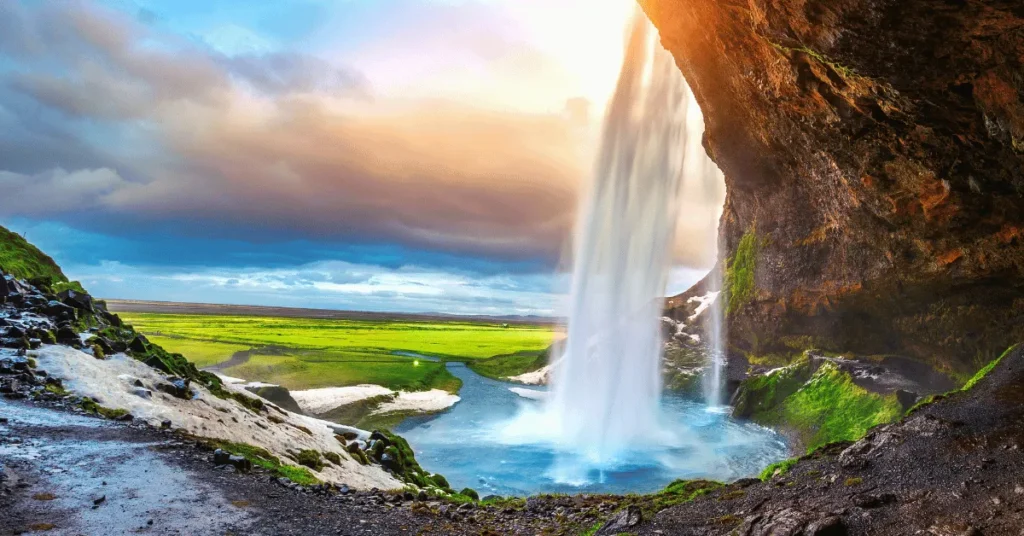
But before you pack your bags and head off to the land of fire and ice, it’s essential to understand the rules and regulations surrounding drone flying in Iceland.
Iceland, known for its otherworldly landscapes and natural wonders, offers an incredible backdrop for drone enthusiasts. However, it’s crucial to respect the country’s guidelines to ensure a safe and enjoyable experience for everyone.
The Icelandic Transport Authority (ITA)
The Icelandic Transport Authority (ITA) oversees the regulations for drone flying in Iceland. As a hobbyist drone pilot, you must adhere to their guidelines to avoid any legal complications.
First and foremost, it’s important to note that drones weighing less than 25 kilograms can be flown for recreational purposes without a permit. However, certain restrictions apply to ensure the safety of both the drone and the surroundings.
Drone Flying Regulations
When flying your drone in Iceland, keep the following regulations in mind:
By adhering to these regulations, you can enjoy the wonders of Iceland from above while ensuring the safety and privacy of others.

Exploring Iceland’s Natural Beauty
From the magnificent waterfalls of Gullfoss to the mesmerizing geothermal fields of Geysir, Iceland offers a plethora of breathtaking sights to explore with your drone. Just remember to fly responsibly and be mindful of the environment and local regulations.
So, if you’re a hobbyist drone pilot dreaming of capturing Iceland’s unparalleled beauty from the skies, go ahead and embrace this incredible opportunity. But always remember to fly within the boundaries of the law and respect the natural wonders that make Iceland so unique.
Read More: How to Become a Drone Pilot in Canada?
Can you fly a drone in Iceland as a commercial drone pilot?
If you’re a commercial drone pilot looking to capture some stunning aerial shots of Iceland’s natural beauty, you might be wondering if you can fly your drone in this land of fire and ice.
The answer is yes, but with some caveats. You see, Iceland is not a free-for-all when it comes to drones. There are some rules and regulations you need to follow, or else you might end up in hot water (literally, if you fly too close to a geyser).
First of all, you need to mark your drone with your name, address, and phone number, just in case it decides to go rogue and crash into someone’s sheep.
Secondly, you need to keep your drone below 400 feet (120 meters) and away from airports, unless you have permission from the Icelandic Transport Authority.

Thirdly, you need to respect the privacy and safety of people and property, and avoid flying closer than 150 meters to any buildings or people.
And finally, you need to have insurance if your drone weighs more than 20kg, which is unlikely unless you’re flying a military-grade drone.
So, as long as you follow these simple rules, you can enjoy flying your drone in Iceland and capture some amazing footage of its volcanoes, glaciers, waterfalls, and geysers. Just don’t forget to pack some warm clothes and a sense of adventure!
Can you fly a drone in Iceland as a visitor drone pilot?
So you want to fly a drone in Iceland, eh? Well, you’re not alone. Iceland is a stunning country with breathtaking landscapes that beg to be captured from above.
But before you pack your drone and head to the land of fire and ice, there are some things you need to know. Flying a drone in Iceland is not as easy as it sounds.
You need to follow some rules and regulations, or you might end up in trouble with the authorities, or worse, with angry locals or wildlife.
First of all, you need to register your drone with the Icelandic Transport Authority (ITA) and mark it with your name, address, and phone number.

This is to make sure they can track you down if your drone causes any damage or disturbance. The registration is free and can be done online, but it might take some time, so don’t leave it until the last minute.
Secondly, you need to respect the weight limits and altitude limits for your drone. The weight limit depends on where you are flying: 3 kg in urban areas and 25 kg in rural areas.
The altitude limit is 120 meters (400 feet) above ground level, unless you have a special permission from the ITA.
You also need to keep your drone within your line of sight at all times and avoid flying near airports, helipads, power lines, or other restricted areas.
Most importantly
Thirdly, you need to be mindful of the privacy and safety of other people and animals. You cannot fly your drone closer than 150 meters to any buildings or people, unless you have their consent.
You also need to avoid flying over national parks, nature reserves, bird colonies, or other sensitive areas where your drone might disturb the wildlife or the environment.
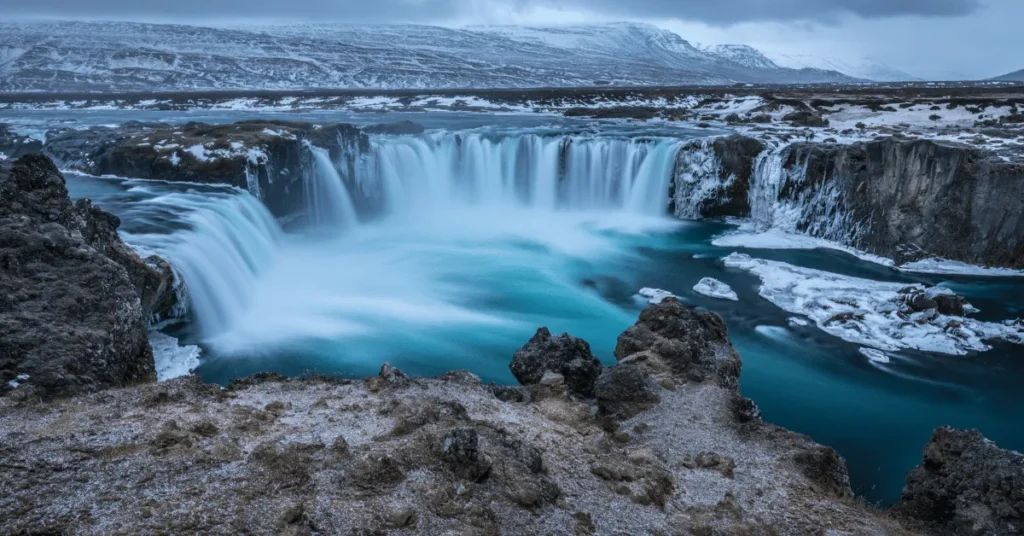
And don’t even think about flying near geysers, volcanoes, or glaciers – they are unpredictable and dangerous, and your drone might end up as a melted pile of plastic.
So, as you can see, flying a drone in Iceland is not a piece of cake. But if you follow these rules and use common sense, you can still enjoy some amazing aerial shots of this beautiful country. Just remember to be respectful, responsible, and safe – and have fun!
Read More: Can You Bring a Drone to Canada?
Can you fly a drone in Iceland as a Government drone pilot?
That’s a good question, but not as good as the answer. The answer is yes, but only if you follow some strict rules and regulations.
You see, Iceland is a beautiful country with stunning landscapes, geysers, volcanoes, and glaciers. But it’s also a country that values its privacy, security, and environmental protection.
So, if you want to fly a drone in Iceland as a Government drone pilot, you need to have a valid license, a registered drone, and a permission from the Icelandic Transport Authority.
You also need to respect the no-fly zones, the maximum altitude and distance limits, and the weather conditions.
And don’t even think about flying over people, animals, or private property without their consent. You might end up with a hefty fine or worse, a frozen drone.

So, can you fly a drone in Iceland as a Government drone pilot? Yes, but only if you’re smart, responsible, and respectful. And maybe a little bit lucky.
What are the general drone laws in Iceland?
If you’re planning to fly a drone in Iceland, you might want to brush up on the local laws and regulations first. Iceland is a beautiful country with stunning landscapes, but it also has some strict rules for drone operators to follow. Here are some of the most important ones:
These are some of the general drone laws in Iceland that you should be aware of before taking off. For more information, you can check the official website of the Icelandic Transport Authority (ITA), which regulates drone flights in the country.
Remember, flying a drone is a privilege, not a right, so be responsible and respectful when you do it.

What are the different allowed categories of drone flights in Iceland?
If you are planning to fly your drone in Iceland, you might want to know what are the different allowed categories of drone flights in this land of fire and ice.
Well, don’t worry, we have you covered. Here is a quick summary of the three categories that the Icelandic Transport Authority has defined for drone operations:
Open category:
This is the category for most recreational and some commercial drone pilots. Drones falling within the range of class identification labels 0 to 4 are eligible for flight in this category.
Alternatively, if your drone was acquired prior to 2023 and weighs under 25 kg, it is also permitted for operation.
You don’t need any authorization or training, but you must follow some basic rules, such as flying below 120 m, keeping your drone in sight, and avoiding crowds and airports.
You can also register your drone and take an online exam on flydrone.is to get some perks, such as flying closer to people and buildings.
Specific category:
This is the category for more complex and risky drone operations that don’t fit in the open category.
You need to apply for an exemption from the drone regulation and submit a risk assessment and an operational manual.
You may also need to undergo some training and testing, depending on the type of operation. Some examples of specific category operations are flying beyond visual line of sight, flying over crowds, or flying drones heavier than 25 kg.

Certified category:
This is the category for the most advanced and high-risk drone operations that involve transporting people or dangerous goods, or flying in airspace where other aircraft operate.
You need to have a certified drone, a licensed remote pilot, and an approved operator. This category is not yet fully implemented in Iceland, so you may want to wait until it is before you start planning your drone taxi service or your volcano eruption photography.
We hope this guide has helped you understand the different allowed categories of drone flights in Iceland.
Remember to always fly safe and respect the environment and the privacy of others. And don’t forget to enjoy the stunning views that Iceland has to offer from above!
Read More: Are Drone Cameras Legal?
What are the most common drone laws in Iceland?
If you’re planning to fly a drone in Iceland, you might want to brush up on your knowledge of the local laws and regulations.
Iceland is a beautiful country with stunning landscapes, but it also has some strict rules for drone operators to follow. Here are some of the most common drone laws in Iceland that you should be aware of:
Common drone laws in Iceland

These are some of the most common drone laws in Iceland that you should know before you take off.
Remember that flying a drone is a privilege, not a right, and that you are responsible for your actions. Iceland is a land of fire and ice, but also of law and order. So don’t be a rebel without a cause, be a smart and respectful drone pilot instead.
Will there be changes in drone laws in Iceland?
Drone enthusiasts and professionals in Iceland have been eagerly awaiting news about potential changes in the country’s drone laws.
With the increasing popularity of drones and their diverse applications, it’s important to stay up-to-date with the regulations governing their use. In this blog post, we’ll explore whether any changes are on the horizon for drone laws in Iceland.
The Current Drone Regulations in Iceland
Currently, drone operators in Iceland must adhere to strict regulations to ensure the safety and privacy of the public.
Drones weighing over 250 grams require registration with the Icelandic Transport Authority, and operators must obtain a license for commercial use. Additionally, drones must not be flown near airports, military installations, or over crowds of people.
Potential Changes on the Horizon
While there haven’t been any official announcements about imminent changes in drone laws, there have been discussions within the Icelandic government about updating the existing regulations.
The aim is to strike a balance between enabling the growth of the drone industry and maintaining public safety.
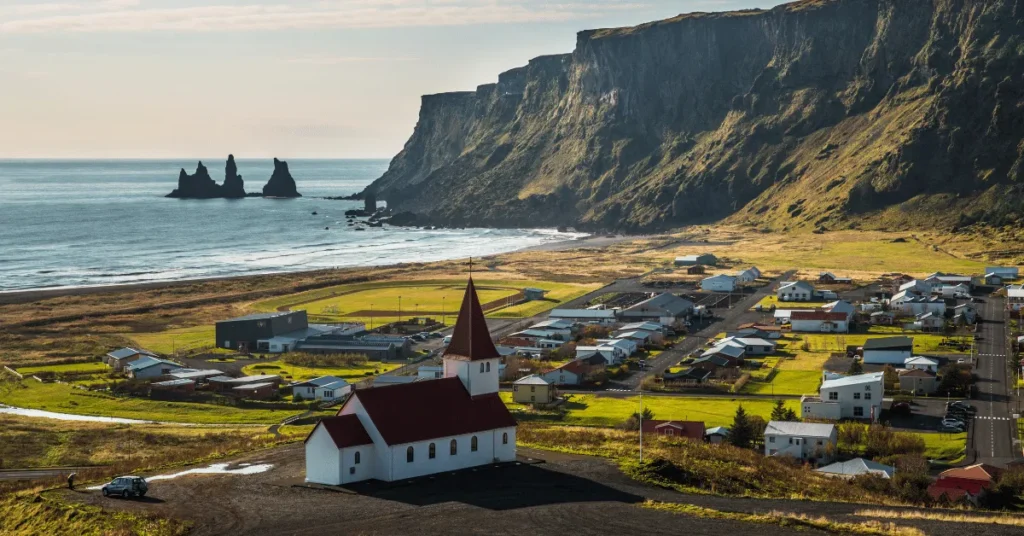
One potential change being considered is the introduction of a tiered system for drone registration and licensing.
This would allow hobbyist drone operators to fly drones weighing under a certain threshold without the need for registration or licensing, while still ensuring that commercial operators adhere to stricter regulations.
Another area of focus for potential changes is the establishment of designated drone zones. These zones would provide designated areas where drone enthusiasts can fly their drones without conflicting with other air traffic or posing a risk to public safety.
Is it worth taking a drone to Iceland?
Absolutely! Unless you’re afraid of heights, cold, or stunning views. Iceland is a drone photographer’s paradise, with its dramatic landscapes, majestic waterfalls, and colorful geothermal pools.
You’ll be able to capture amazing shots that will make your friends and followers green with envy. Just make sure you follow the rules and regulations for flying drones in Iceland, and respect the nature and the locals. You don’t want to end up in a hot spring or a jail cell.
How to register a drone in Iceland?
If you want to fly your drone in Iceland, you might need to register it first. It depends on whether you are a hobbyist or a professional, and how heavy your drone is. Here are the steps to follow:

That’s it. Now you are ready to capture some amazing footage of Iceland’s volcanoes, glaciers, waterfalls and geysers. Just remember to respect the nature and the privacy of others. And don’t forget to pack some warm clothes. It’s cold out there.
Who should MUST register a drone in Iceland?
If you are planning to fly a drone in Iceland, you might wonder if you need to register it first. The answer is: it depends. According to the Icelandic Transport Authority, only drones that weigh more than 250 grams and are used for commercial purposes must be registered.
So, if you have a tiny toy drone or you are just flying for fun, you are off the hook. But if you have a bigger drone or you are making money from your aerial shots, you better get your paperwork done.
Otherwise, you might face some hefty fines or even lose your drone. And that would be a shame, because Iceland is a stunning place to capture from above.
Who should MUST get the insurance in Iceland and who should not as a drone pilot?
If you’re a drone pilot in Iceland, you might be wondering whether you need insurance or not. Well, the answer is: it depends. If you’re flying for fun, you don’t need any insurance, as long as you follow the rules and regulations.
But if you’re flying for commercial purposes, you MUST get third-party liability insurance, which covers any damage or injury you might cause to others.
You should also consider getting hull insurance, which covers your own drone in case of accidents.

So, to sum up, if you’re a hobbyist, you’re good to go. But if you’re a professional, you better get insured. And don’t forget to enjoy the beautiful scenery of Iceland from above!
Where are no fly zones for a drone pilot in Iceland?
If you’re a drone pilot looking for some stunning aerial shots of Iceland, you might want to check the map before you take off.
Iceland has some strict rules about where you can and can’t fly your buzzing buddies, and you don’t want to get in trouble with the authorities or the locals. Here are some places to avoid:
So where can you fly your drone in Iceland? Well, there are still plenty of places that are not no-fly zones, such as the coastlines, the highlands, the glaciers, and the volcanoes.
Just make sure you follow the general rules of drone flying, such as keeping your drone in sight, respecting people’s privacy, and not flying in bad weather conditions. And don’t forget to enjoy the view!

How much does it cost to register a drone in Iceland?
If you are thinking of flying a drone in Iceland, you might want to know how much it will cost you to register it. Well, the answer depends on the size and weight of your drone, as well as the purpose of your flight.
According to the Icelandic Transport Authority, you will need to pay a registration fee of 2,500 ISK (about 20 USD) for drones weighing less than 25 kg and used for recreational or educational purposes.
However, if your drone weighs more than 25 kg or is used for commercial or professional purposes, you will need to pay a higher fee of 10,000 ISK (about 80 USD).
Additionally, you will need to pay an annual fee of 1,000 ISK (about 8 USD) for each drone you register.
So, before you take off, make sure you have enough cash to cover the costs of your drone registration. Otherwise, you might end up grounded or fined by the authorities.
Can you rent drones in Iceland?
Of course you can, but why would you want to? Iceland is a land of stunning natural beauty, where you can see glaciers, volcanoes, waterfalls, and geysers.
Why would you need a drone to capture that? Just use your eyes and your camera, and enjoy the scenery.
Drones are noisy, annoying, and expensive. Plus, they might get lost or damaged by the weather. Save yourself the hassle and the money, and rent a car instead. You’ll have more fun and more freedom.
This is what I recommend.

Can you fly your drone to get the video footages of northern lights?
That sounds like a great idea, but there are some challenges you need to consider. First of all, the northern lights are unpredictable and you might have to wait for a long time before they appear.
Second, the weather conditions in the Arctic can be harsh and affect your drone’s performance and battery life.
Third, you need to make sure you have the proper permissions and regulations to fly your drone in the area. You don’t want to get in trouble with the authorities or disturb the wildlife.
So, before you pack your drone and head north, do some research and plan ahead. It might be worth it to capture the stunning beauty of the aurora borealis, but it’s not as easy as it sounds.
Can you buy drones in Iceland?
Sure, if you have enough cash and a good reason. Iceland is not a drone-friendly country, as they have strict regulations on where and when you can fly them.
You need a special permit from the Icelandic Transport Authority, and you have to follow the rules of the Icelandic Civil Aviation Administration.
You also have to respect the privacy and safety of other people and animals, especially the puffins.
They are very cute and very protected. So, unless you are a professional photographer or a researcher, you might want to leave your drone at home and enjoy the natural beauty of Iceland with your own eyes.

What are the best locations to fly a drone in Iceland?
If you’re looking for some stunning scenery to capture with your drone, Iceland is the place to be. The land of fire and ice offers a variety of landscapes, from volcanoes and glaciers to waterfalls and geysers. Here are some of the best locations to fly a drone in Iceland:
Sources:
- Where you are allowed to fly a drone in Iceland
- Register as a drone operator in Iceland
- Online drone pilot training and tests in Iceland (TBD)
- Apply for an authorization to fly in Iceland
- https://www.oecd-ilibrary.org/sites/12f10c2a-en/index.html?itemId=/content/component/12f10c2a-en
- https://www.icetra.is/aviation/drones/
- Contact Information: icetra@icetra.is OR +354 480 6000
Final Thoughts – Can You Fly a Drone in Iceland?
So, can you fly a drone in Iceland? Yes, you can! Just make sure to follow the regulations set by the Icelandic Transport Authority, obtain a permit if necessary, and fly responsibly.
Iceland’s breathtaking landscapes provide the perfect backdrop for drone photography and videography, but it’s important to respect the privacy and safety of others while enjoying your flight.
So pack your drone, check the regulations, and get ready to capture some stunning aerial shots in the land of fire and ice!
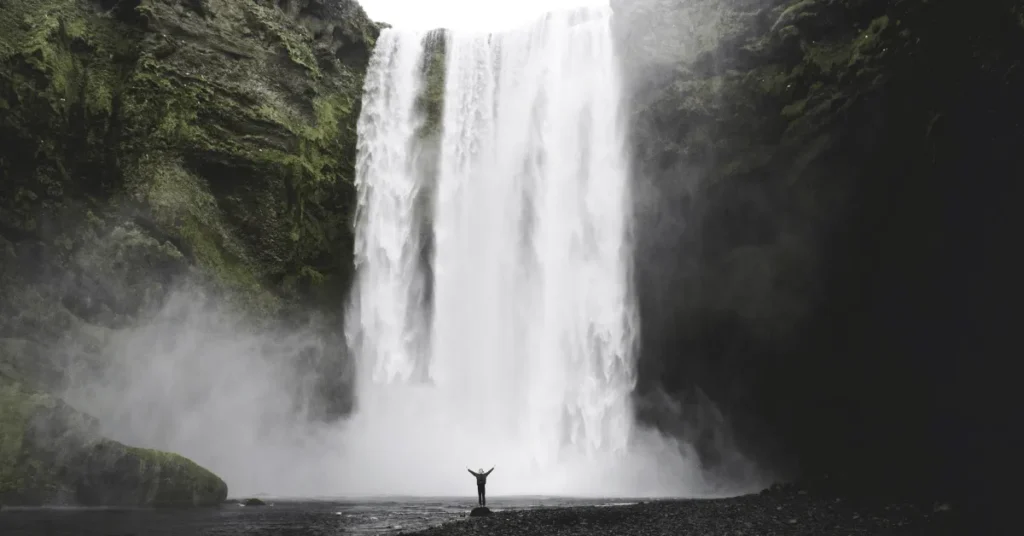
FAQs
Yes, drones are allowed in Iceland, but there are certain regulations and restrictions that you need to be aware of before taking to the skies. The Icelandic Transport Authority (ITA) has set guidelines to ensure the safe and responsible use of drones.
If you are flying a drone for recreational purposes and it weighs less than 5 kg, you do not need a permit. However, if your drone weighs more than 5 kg or you plan to use it for commercial purposes, you will need to obtain a permit from the ITA.
You can fly your drone in most areas of Iceland as long as you follow the regulations. However, there are certain restricted areas, such as airports, national parks, and nature reserves, where drone flights are prohibited. Always check the latest regulations and respect the privacy of others when flying your drone.
When flying a drone in Iceland, you must keep it within your line of sight at all times. You should also avoid flying over crowds, private property, or sensitive areas. It is important to respect the privacy and safety of others while enjoying your drone flight.
Yes, there are penalties for breaking the drone regulations in Iceland. If you fly your drone in restricted areas or violate the safety regulations, you may be fined or face other legal consequences. It is important to familiarize yourself with the regulations and fly responsibly to avoid any penalties.

